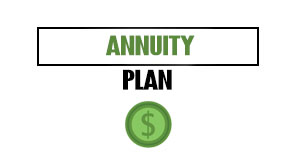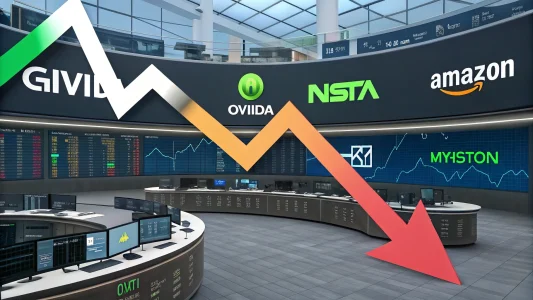Let’s talk about something that stops a lot of people from getting financial advice: the cost. You might imagine financial advisors as expensive professionals who only work with millionaires, charging thousands of dollars just to have a conversation. The reality is much more nuanced – and often more affordable than you’d expect.
Financial advisor fees vary wildly depending on what type of advisor you choose, how much money you have to invest, and what services you need. Some charge a few hundred dollars for a one-time consultation, while others take a percentage of your investments each year. Let’s break down exactly what you can expect to pay and whether it’s worth it.
Table of Contents
ToggleThe Main Ways Financial Advisors Get Paid
Assets Under Management (AUM) Fees: This is the most common fee structure. The advisor charges an annual percentage of the money they manage for you. Typically, this ranges from 0.5% to 2% per year.
Here’s what that looks like in real dollars:
- $100,000 portfolio at 1% = $1,000 per year
- $500,000 portfolio at 1% = $5,000 per year
- $1,000,000 portfolio at 1% = $10,000 per year
The percentage often decreases as your portfolio grows. You might pay 1.5% on your first $250,000, then 1.25% on the next $250,000, and so on.
Hourly Rates: Some advisors work like lawyers or consultants, charging by the hour. Rates typically range from $150 to $400 per hour, with most falling between $200-$300. This can be great for specific questions or one-time financial planning.
Flat Annual Fees: Instead of a percentage, some advisors charge a flat fee regardless of your portfolio size. This might range from $1,000 to $10,000 per year, depending on the complexity of your situation and the services provided.
Commission-Based: These advisors don’t charge you directly. Instead, they earn commissions from the financial products they sell you – mutual funds, insurance, annuities, etc. While there’s no upfront cost to you, these commissions can add up to more than fee-based advice over time.
Hybrid Models: Many advisors combine different fee structures. They might charge a flat planning fee plus a smaller AUM percentage, or hourly rates for planning with commissions on products.
What Different Types of Advisors Actually Cost
Traditional Wealth Management Firms: These are the “white glove” service providers you might think of first. They typically:
- Charge 1% to 2% of AUM annually
- Require minimum investments of $250,000 to $1,000,000
- Provide comprehensive wealth management, tax planning, and estate planning
- Offer personalized service with regular meetings
For a $500,000 portfolio, you’d pay $5,000-$10,000 per year.
Independent Fee-Only Advisors: These advisors don’t sell products, so they don’t earn commissions. They typically:
- Charge 0.5% to 1.5% of AUM annually
- May have lower minimums ($100,000-$250,000)
- Focus on financial planning and investment management
- Often provide more transparent pricing
For a $250,000 portfolio, you’d pay $1,250-$3,750 per year.
Robo-Advisors with Human Support: Companies like Betterment, Wealthfront, and Vanguard Personal Advisor Services offer:
- Very low fees: 0.25% to 0.50% of AUM annually
- Low or no minimums
- Automated investing with access to human advisors
- Basic financial planning services
For a $100,000 portfolio, you’d pay $250-$500 per year.
Fee-Only Financial Planners: These professionals focus on planning rather than investment management:
- Hourly rates: $150-$400 per hour
- Project fees: $1,000-$5,000 for comprehensive plans
- Annual retainer fees: $2,000-$7,500
- No ongoing investment management
A comprehensive financial plan might cost $2,000-$4,000 as a one-time expense.
The Hidden Costs You Need to Know About
Expense Ratios: Investments, even if your advisor charges reasonable fees, the mutual funds or ETFs in your portfolio have their own costs. These expense ratios typically range from 0.03% for index funds to 1.5% or more for actively managed funds.
Trading Costs: Frequent buying and selling of investments can rack up transaction fees, even in accounts with “free” trading.
Performance Fees: Some high-end advisors charge additional fees based on the performance of your investments. These are less common but can be significant.
Account Maintenance Fees: Some firms charge annual account fees ($50-$200) regardless of your balance or advisor fees.
When the Cost Might Be Worth It
You Have a Complex Financial Situation: If you have multiple income sources, own a business, have significant tax considerations, or need estate planning, a good advisor can often save you more money than they cost.
You’re Prone to Emotional Investing: If market volatility makes you want to sell everything or you find yourself chasing hot investment trends, an advisor’s steady hand might be worth the fee.
You Don’t Have Time or Interest: If researching investments and managing your portfolio feels overwhelming or you’d rather spend time on other things, paying for professional management makes sense.
You’re Approaching Retirement: The transition from saving to spending in retirement involves complex decisions about Social Security, Medicare, tax planning, and withdrawal strategies that can benefit from professional guidance.
When You Probably Don’t Need to Pay Advisor Fees
You Have a Simple Financial Situation: If you’re young, have straightforward finances, and are comfortable with basic index fund investing, you might not need professional help yet.
You Enjoy Managing Your Own Investments: If you like researching investments and have the time to manage your portfolio, you can save significant fees by going the DIY route.
Your Portfolio Is Still Small Paying 1% on a $50,000 portfolio ($500 per year) might not provide enough value to justify the cost, especially when low-cost robo-advisors are available.
How to Evaluate If an Advisor Is Worth Their Fee
Calculate the Break-Even Point: Ask yourself: could this advisor’s guidance help me earn an extra 1-2% annually through better investment choices, tax planning, or avoiding costly mistakes? If so, their fee might pay for itself.
Consider the Time Value: How many hours per month do you spend managing your finances? Multiply that by your hourly earning rate. If it’s more than the advisor’s fee, you might be better off delegating.
Look at the Complete Service Package: Don’t just compare investment management fees. Consider whether the advisor provides tax planning, estate planning, insurance guidance, and behavioral coaching.
Red Flags: When an Advisor Costs Too Much
- Annual fees above 2% (unless you have a very complex situation requiring extensive services)
- High-fee investment products with expense ratios above 1%
- Excessive trading that generates lots of transaction costs
- Commission-based products when fee-based alternatives exist
- Lack of transparency about all fees and costs
Alternatives to Traditional Financial Advisors
Robo-Advisors: Perfect for straightforward investment management at very low costs (0.25-0.50% annually).
Fee-Only Planning Sessions Pay for advice on specific questions or a comprehensive plan without ongoing management fees.
Target-Date Funds: These automatically adjust your investments as you age. Total costs are typically under 0.20% annually with no advisor needed.
DIY with Educational Resources: Books, podcasts, and online resources can help you manage your own investments for the cost of a few books and your time.
Getting the Most Value from Advisor Fees
Ask About Fee Schedules: Many advisors offer sliding fee scales. The percentage often decreases as your assets grow.
Negotiate: Especially for larger portfolios, fees are often negotiable. Don’t be afraid to ask about fee reductions.
Understand What’s Included: Make sure you know exactly what services you’re paying for and take advantage of all of them.
Review Annually: As your portfolio grows, make sure your fee percentage decreases accordingly, and evaluate whether you’re getting good value.
The Bottom Line on Financial Advisor Costs
A good financial advisor isn’t an expense – they’re an investment. But like any investment, you need to make sure the potential returns justify the cost.
For many people, especially those with portfolios under $100,000, low-cost robo-advisors or DIY investing make the most financial sense. As your wealth and complexity grow, the value of human advice typically increases.
The key is being honest about what you need. If you just want someone to manage a simple portfolio of index funds, paying 1.5% annually is probably too much. But if you need comprehensive financial planning, tax strategy, and behavioral coaching, that same 1.5% might be a bargain.
Remember, the most expensive financial advice is bad advice, regardless of what you pay for it. The cheapest advice is good advice that helps you avoid costly mistakes, even if it costs more upfront.
Before hiring any advisor, make sure you understand exactly what you’ll pay, what services you’ll receive, and how those costs compare to alternatives. Your future wealth depends not just on earning good returns, but on keeping fees reasonable along the way.
Featured Image Credit: Photo by Tima Miroshnichenko; Pexels
















